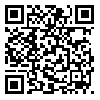Volume 3, Issue 3 (2015)
Health Educ Health Promot 2015, 3(3): 15-27 |
Back to browse issues page
Download citation:
BibTeX | RIS | EndNote | Medlars | ProCite | Reference Manager | RefWorks
Send citation to:



BibTeX | RIS | EndNote | Medlars | ProCite | Reference Manager | RefWorks
Send citation to:
Moosavi S, Farmanbar R, Fatemi S, Ezzati Larsari E, Yazdanipour M A, Afkar A. Predicting Physical Activity Behavior among ICU Nurses based on a Transtheoretical Model Using Path Analysis. Health Educ Health Promot 2015; 3 (3) :15-27
URL: http://hehp.modares.ac.ir/article-5-1195-en.html
URL: http://hehp.modares.ac.ir/article-5-1195-en.html
Saghi Moosavi1, Rabiollah Farmanbar *2, Saghar Fatemi3, Ebrahim Ezzati Larsari4, Mohamad Ali Yazdanipour5, Abolhasan Afkar6
1- Instructor, Department of Nursing, Faculty of Nursing and Midwifery, Guilan University of Medical Science and Health Services, Guilan, Iran, Rasht
2- Associate Professor , Department of Health Education and Promotion, School of Health, Social Determinants of Health Research Center (SCHRC), Guilan University of Medical Sciences, Rasht, Iran
3- MD, Health and Environment Research Center, Guilan University of Medical Science and Health Services, Guilan, Iran, Rasht
4- Assistant Professor, Department of Linguistics and Foreign Languages, Payame Noor University, Tehran, Iran, Rasht
5- B.Sc., Faculty of Nursing and Midwifery, Guilan University of Medical Science and Health Services, Guilan, Iran, Rasht
6- Assistant Professor, School of Health, Social Determinants of Health Research Center (SCHRC), Guilan University of Medical Sciences, Rasht, Iran, Rasht
2- Associate Professor , Department of Health Education and Promotion, School of Health, Social Determinants of Health Research Center (SCHRC), Guilan University of Medical Sciences, Rasht, Iran
3- MD, Health and Environment Research Center, Guilan University of Medical Science and Health Services, Guilan, Iran, Rasht
4- Assistant Professor, Department of Linguistics and Foreign Languages, Payame Noor University, Tehran, Iran, Rasht
5- B.Sc., Faculty of Nursing and Midwifery, Guilan University of Medical Science and Health Services, Guilan, Iran, Rasht
6- Assistant Professor, School of Health, Social Determinants of Health Research Center (SCHRC), Guilan University of Medical Sciences, Rasht, Iran, Rasht
Abstract: (6502 Views)
Aim: Regular physical activity has several physical, psychological and social benefits. However, it is a global health problem, especially among ICU nurses. Therefore, in order to improve nurses’ physical activity, it is required to determine the effective correlated factors. The aim of this study was to delineate predictive factors on the physical activity of ICU nurses based on a trans-theoretical model (TTM) using path analysis.
Method: Accordingly, in this cross-sectional study, 82 nurses from eight intensive care units of six hospitals in Guilan University of Medical Sciences completed the translated version of Global Physical Activity Questionnaire (GPAQ) and another questionnaire, which included a range of constructs from the TTM. Data were analyzed using bivariate correlation and path analysis.
Findings: It was revealed that self-efficacy (β=0.24) and Pros (β=0.18) had a direct effect on the participants’ physical activities. It is important to state that self-efficacy was effective on the participants, behavioral physical activity both directly and indirectly. Totally, self-efficacy with the path coefficient of 0.62 was considered as the strongest predictive factor of physical activity among the ICU nurses.
Conclusion: To enclose, the determined effective factors in improving the ICU nurses’ physical activity were expected to be of more concern, especially self-efficacy as the strongest one.
Method: Accordingly, in this cross-sectional study, 82 nurses from eight intensive care units of six hospitals in Guilan University of Medical Sciences completed the translated version of Global Physical Activity Questionnaire (GPAQ) and another questionnaire, which included a range of constructs from the TTM. Data were analyzed using bivariate correlation and path analysis.
Findings: It was revealed that self-efficacy (β=0.24) and Pros (β=0.18) had a direct effect on the participants’ physical activities. It is important to state that self-efficacy was effective on the participants, behavioral physical activity both directly and indirectly. Totally, self-efficacy with the path coefficient of 0.62 was considered as the strongest predictive factor of physical activity among the ICU nurses.
Conclusion: To enclose, the determined effective factors in improving the ICU nurses’ physical activity were expected to be of more concern, especially self-efficacy as the strongest one.
Article Type: Original Article |
Subject:
Health Behavior
Received: 2016/10/21 | Accepted: 2015/09/1 | Published: 2017/02/8
Received: 2016/10/21 | Accepted: 2015/09/1 | Published: 2017/02/8
| Rights and permissions | |
 |
This work is licensed under a Creative Commons Attribution-NonCommercial 4.0 International License. |





